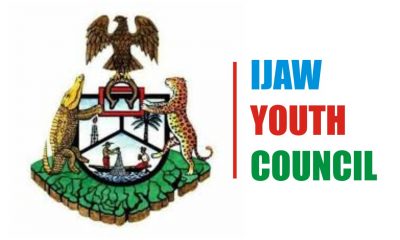Social/Kiddies
Need To Take Care Of Children Worldwide
At the end of last year, United Nations Children’s Fund (UNICEF) released a new report, ‘Preventing A Lost Decade: Urgent Action’ to reverse the devastating impact of COVID- 19 on children and young people. While it is easy for reports released in December to get lost in the end of the year rush, this report needs everyone’s attention. UNICEF called COVID-19 the greatest challenge to children in its 75-year history; and the situation is exacerbated by conflict, disaster, and climate change.
The facts tell a sobering story about the impact of the pandemic on children.
In less than two years, 100 million more children have fallen into poverty, a 10 percent, increase since 2019.
In 2020, over 23 million children missed out on essential vaccines.
50 million children suffer from wasting, the most life-threatening form of malnutrition, and this could increase by 9 million by 2022
At its peak in March 2020, 1.6 billion children were facing school closure.
Behind every one of these numbers are real stories: young children were left behind as preschool closed and food lines grew. School age children, particularly those with the most to gain, had limited access to remote learning. Teens suffered from social isolation and lack of mental health supports, and growing demands for early marriage. Parents tried their best to keep it all going; yet too often without the financial and social resources they needed. And the unpredictability of everyday life brought stress that seemed almost impossible to bear.
Fortunately, many communities around the world rallied: volunteers delivered food, distributed protective equipment and set up new hygiene facilities, and teachers worked to connect children with resources at home. We were all inspired by stories of people working for change, from health care workers to childcare providers, from youth to seniors.
Yet the challenges facing children were alarming even before COVID-19 became a household word. Approximately, one billion children, nearly half of the world’s children live in countries that are at an “extremely high risk” from the impacts of climate change and more and more children are forcibly displaced, all too often from conflict that could have been and should have been avoided.
Clearly, those in positions of power need to make investing in children, families, and communities a priority this year and in the years ahead. This is particularly true for U.S Foreign Assistance. Building on earlier work, in June of 2019, the U.S. launched Advancing Protection and Care for Children in Adversity: A United States Government Strategy for International Assistance (2019-23). This important document outlines a strategy for investing in the world’s most vulnerable children. In 2020 Congress passed the Global Child Thrive Act, providing additional direction for U.S. Government to invest in early childhood development. These are both important steps; now we all have to assure that they receive the attention and resources that this movement deserves.
The UNICEF report outlines an urgent agenda for action for children, including recommendations to invest in social protection, health, and education as well as building resilience to better prevent, respond to and protect children. Government, business and civil society and the public need to work together. But as in any crises, each individual action makes a difference. We can not wait for someone else to step forward with a solution. Each of us must ask: What can I do to help a neighbour, work in my community, build awareness, provide another voice, help empower others? What else can we do to integrate these issues into every field of study: from health to education, from diplomacy to economic development, from environmental studies to urban planning and design?
In their powerful new book, The Book of Hope: A Survival Guide for Trying Times, Jane Goodall and Douglas Abrams with Gail Hudson, addressed an important question-How do we stay hopeful when everything seems hopeless? What is so uplifting about this story is that it draws a clear link between hope and action. It seems to be telling us that, while important, it is not the resilience of nature or the human intellect alone that matter, but also our spirit and belief in the possibilities and the power to take action. I can’t think of a better year to start.
Lombardi is an international expert on early childhood development and Senior Fellow at the Collaborative on Global Children’s Issues, Georgetown University.
By: Joan Lombardi
Social/Kiddies
Need For Girl-Child Education In Society
Girl-child education is a way by which a girl- child is being exposed through formal education for proper education.
It is a process whereby a girl-child is being exposed to some certain things according to “teachmit@wp”.
Girl-child education refers to the aspect of education that ends at developing the skills and knowledge of girls and women no matter their backgrounds.
Some parents think that educating a girl- child is wasting of their resources. No. When a female child is educated, it gives her that respect even the husband cannot treat her anyhow because he will know her worth.
The importance of educating the girl- child cannot be overemphasised. It helps to empower the country and makes them have a better life. Once they are educated, they realise the importance of exhibiting good hygiene habits.
It may interest you to know that when a girl-child is educated, she has a sense of belonging in the society. In Nigeria nowadays, they have the potential of becoming governors, chairmen of local government areas, among others.
The tendency of taking cognisance of the importance of reduction in child bearing is high. When a woman is educated, the level in which she will give birth will reduce considering the dangers inherent.
Firstly, she will calculate herself and know when to conceive, although with the consent of her husband and the numbers of children she wants.
A girl who is educated will know how to educate her children properly. She will be of good benefits to the family.
Truly, a girl who is not properly educated will suffer lack of knowledge, fall into early marriage which will lead into early pregnancy. Some of these can cause domestic violence.
Women need education because without proper knowledge, a woman cannot run her home properly. A woman that is educated leads her home aright.
Some men use and take advantage of uneducated women by rendering all kinds of abuses on them, some rape their wives in course of making love and others insults their wives in public all because there is no education. In life, males and females should be educated without discrimination.
Furthermore, educating a girl-child is like investing in a big business that one will not run into a loss.
According to Dr Shaifali, girls’ education is like sowing the seed which gives rise to a revitalised, cheerful and full-grown family plants.
She also said educated women have the capacity to bring socio- economic changes.
Growing up from the family of three, my father told me that he was not ready to train a female child and when I asked why, he said: ” because when you will grow and become great, then, a man will come from nowhere and marry you and all my money will be wasted. When you marry, your name will be changed that means all your riches and wealth will become your husband’s own because you people are one”.
Frankly, I was very bitter with myself and I started questioning God that why was I not created as man, but I took it upon myself that weather the devil likes it or not, I will prove my father wrong by going to school and I will show the difference.
As parents when training children we should not think less of any child because every child is important and have value.
Every child is a blessing from God. This is a clarion call to all men of our present society to accord their wives the respect they deserve. A man can develop his wife after marriage.
Education plays an important role in the life of a girl-child. Let every girl-child be educated. The government should provide the society with basic amenities such as good schools that are well-equipped.
Parents from time to time should be re-oriented in this regard taking cognisance of the importance of developing the girl-child. None should be misled by saying that the girl-child need not attend formal education.
Since some parents do not have the wherewithal to sponsor their children, governments at all levels should introduce free education to give room for equal opportunity. Bursary payment should be re-introduced in all higher educational institutions.
Education is the bedrock of any society therefore women education cannot end in the kitchen.
Princess Npapa
Princess Npapa is a student of Pan Africa Institute of Management and Technology.
Social/Kiddies
Celebrating Woman As An Icon Of Strength
A woman is a dynamic multifaceted individual who embodies resilience, courage and determination.
She is a game changer and a force to be reckon with, a confidant empowered, supportive, adaptable and inspirational.
Many had asked why women are being celebrated even as recorded in calendar so frequently unlike men and I said, a woman being multifaceted and embodies resilience and determination is worth being celebrated unlike in the 80s when women were meant to understand that their place was in the kitchen of their husbands’ houses.
What an amazing level of development where women can choose a career and work on themselves and know that there is more to life than being in the kitchen and ending up in a man’s house with nothing to show for it.
Women are the strongest versions of the gender of humans in the world even in their silence, women hold a depth of emotions, questions and unspoken thoughts. Their smiles often conceal their true feelings, masking their fears, doubts and desires.
Despite these challenges, women continue to rise above, shattering glass ceilings and pushing boundaries.
Today innovative, women are enterprenuers, leaders, and change agents. Inspiring women like Ngozi Okonjo-Iweala, Chimamanda Adichie and many others have paved the way for future generation, their achievements serve as testaments to women’s strength, resilience and capabilities.
The calendar tell us how unique the woman is and her significance in the home and society at large. As a woman, she holds power and I celebrate every woman out there in the world irrespective of how you may have fallen, you shall rise above the challenges, support one another and celebrate collective strength and resilience.
Woman as an icon of strength is not just about individual achievements but creating supportive networks, uplifting others and celebrating collective success, defying expectations and redefining what it means to be a strong woman.
The strength and bravery of women are worthy of celebration by the entire world as none is unique as the epitome of nation builders, character molders and pacesetters not just in their family but to the society at large.
A woman is a selfless mother, lover and care giver to her family, a daughter who supports her parents, as a sister’s unshakeable bond with her siblings and a friends unconditional empathy and understanding.
These acts of kindness and love are not most times talked about but hold families and communities together and bonding strong women are powerful beings who have impacted the society, shaping the foundation of the world from the 80s to date, I personally want to celebrate all the icons of strength who had fought and are still fighting , that our voices as women are heard even unto the ends of time.
I celebrate you all amazing women for standing strong and paving ways for the future generation for equality, justice and human rights. To the rising child, teenager and adults who happen to be a ‘woman’, I celebrate our collective efforts, our strength in helping one another to rise, irrespective of our differences in our backgrounds.
We are super humans, unique beings, no wonder the Bible acknowledges the importance of our strength. Therefore, let’s celebrate every woman out there.
Kate Chisom Isiocha
Isiocha, is a student of Temple Gate Polytechnic.
Social/Kiddies
Children And Basics Of Family
It is the idea of God that family should exit. Children form part of the family. God loves family so much that Jesus was born into the family of Joseph.
Everyone’s family is good and important. Children should not look down on their family whether they are rich or poor.
Children should respect and honour their family and foster love among their siblings. They should work together and make peace in the family. They should always stand in the gap. It is good for family members to carry all along since everyone may not be doing well.
The Christianity that children learn is practised in family. Faith-based organisations do a great job in moulding children’s character. Those are the behaviours that children exhibit towards siblings in family.
Every child born in a family is there for a purpose. A baby born into a family is supplying something. It may be joy, wealth and so on. Everyone is important in a family.
Adolescents who have graduated from school but may not be contributing financially can do one or two things at home. You can engage in preparing meals at home while parents are away for a job or business. Contributing in house chores will go a long way to relieve parents of stress after a day’s job.
What do you contribute to your family, especially during holidays both in nuclear and extended family?
The family you were born is constant but friends are temporary. You can decide not to continue in friendship but you cannot cut off your family. No matter how bad you think your family is and you decide to leave home, you must surely return. Your friends can harbour you for a while.
The child’s first identity comes from the family. What the child learns first comes from the family.
Family is the centre of love and care. People have started playing down on marriage because of neglect on basics of family. Marriage starts today and and the next few months, it is threatened. Respect for family plays a crucial role in marriage.
No child grows without parental control and influence. If a child refuses to grow without taking instructions from parents, he may grow up being wild. There are consequences when children do not obey their parents. There are those who want to be rebellious against their parents. They should know that their length of days are tied to their parents.
Your bioligical parents know you more than every other person. There is the wisdom and knowledge your parents have that you do not so it is proper to listen to them before choosing carriers both in academics and job. A young man or woman can choose who to get married to, but a greater role in the choice of who to marry and the marriage proper comes from the parents.
They know what is best for you. No matter how modern trends will influence you and prove it wrong, parent is the key. No one can love you more than your parents because they are your blood.
A lot of parents have been traumatised due to the fact that children they nurtured and trained turned their back on them at older age. Children should not abandon their parents for any reason.
As you grow up, situations may arise in marriage when you decide it is over with your spouse, but no matter the level of provocation with your parents, they will not despise you. Parents will also play a role in that regard. Problem arises in every family but how it is handled matters a lot.
Some children honour their mentors more than their parents. Although there are parents who shy away from their responsibilities. It is important that parents take full responsibility of their children. You cannot bring a child to the planet earth and refuse to perform roles as a parent. But parents may not quantify what they spent from childhood to adolescence. That is a blessing children cannot get from another person.
There are people who have attributed their failure in life to the fact that their parents, especially mothers are witchcraft. It is wrong to feel that your mother is instrumental to your failure in life. The only way to success is hardwork.
Let money not determine the level of love for your parents. Wherever a child goes, family is constant.
Eunice Choko-Kayode
-
Business5 days ago
Industry Leaders Defend Local Content, … Rally Behind NCDMB
-
News5 days ago
KENPOLY Appoints Abalubu As Ag. Registrar
-

 Niger Delta5 days ago
Niger Delta5 days agoEx-IYC President Lampoons Atiku’s Presidential Ambition … Declares It Negative Impact On N’Delta
-
News5 days ago
UN Warns Floods May Unleash Toxic Chemicals, Pose Risk To Elderly, Ecosystems
-

 Featured5 days ago
Featured5 days agoINEC To Unveil New Party Registration Portal As Applications Hit 129
-
Business5 days ago
NCDMB Promises Oil Industry Synergy With Safety Boots Firm
-
News5 days ago
Police Rescue Kidnapped Victim As Suspects Escape With Gunshots in Rivers
-

 Niger Delta5 days ago
Niger Delta5 days agoC’River Focused On Youth Empowerment – Commissioner

